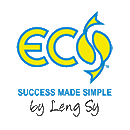Reviews from customers are the most reliable method to determine the reliability of a business that is able to write essays is reliable. These reviews are usually posted online by the business and should be believed to be genuine. Reputable review platforms enforce strict rules that stop fraudulent reviews from appearing. essay writing service Trustpilot and SiteJabber are two such examples. Many essay writing companies publish reviews from customers on their websites. Many of them even make them available as videos. If you’re not sure about the authenticity of the review it is possible to get in touch with the reviewer and confirm their identity.
If you need to buy essays papers, you can use websites that offer custom writing services.gradesfixer reviewWhile it is difficult to rely on the reviews of other people, there are some reliable places where you can find online essay writing service review.
There are two phases in essay writing. The first step is called the initial draft called the initial draft. essay writers The initial draft is rough and you can use your notes to make. When the first draft has been completed, it is possible to go on to the next outline sentence.
Writing an essay involves two main steps. This is the first stage called the initial draft. essay writers The first draft could be a simple, messy draft using notes thoroughly. When the first draft is complete, you can move to an outline for the following sentence.



